Updates from our area teams - October 2023
Since the kick off of Species on the Edge earlier this year, our project officers have been busy! Here's an update on what’s been going on in each of our project areas so far.
Argyll and the Inner Hebrides
Sally Morris (Buglife), Lucy Atkinson (RSPB Scotland), Liz Peel (Butterfly Conservation), Cathryn Baillie (Bat Conservation Trust), Project Officers

It’s been a busy summer of surveying for Species on the Edge in Argyll and the Inner Hebrides. In April, we launched our citizen science project asking people to record sightings of oil beetles in Scotland, especially encouraging people to look out for the threatened short-necked oil beetle. In sunny April, stellar counts of short-necked oil beetles on Islay and Barra were found. We received the amazing news that they were found for the first time on Tiree, with five spotted by Ranger Hayley. After some rainy weather in the Inner Hebrides, the sun finally made way for us to survey lapwing and curlew on Islay and Colonsay to understand more about their distribution on these islands.
The sunny weeks at the end of May encouraged our moths to come out a little earlier than expected! Luckily our planned trip to Ulva with 20 volunteers was just in time to catch sight of some day-flying burnet moths, including the slender Scotch and transparent burnet moths which make their homes on the steep-sided cliffs on the island. As well as monitoring, we’re also supporting farmers on Mull and Ulva to manage their land for these species.

Into July and the great yellow bumblebees started to emerge. With their mainstay on Tiree, we also had a number of sightings on neighbouring Coll! We’ve also been island hopping on the lookout for the northern colletes solitary bee, learning more about their distribution and needs. Mid-summer saw us popping up at agricultural and community shows and it was great to see some of you there and sharing more about our special species.
Whilst many of our species surveys require sunny days, it is warm, still nights which our next species favour. As well as bringing out the midges, these nights are also perfect for spotting and recording one of their predators - bats! We have been leaving out audio recording equipment on Skye and will be analysing this over the next few months to see what species of bats we have managed to record!
Into September and whilst the adult butterflies had their flourish in early summer, the marsh fritillary caterpillars have emerged, feeding their way through their favourite plant, Devil’s-bit scabious. The caterpillars spin a protective web, and it is these which are counted to assess their populations. This species is susceptible to population fluctuations, but by early indications this has been a bumper year for them!
Whilst many of our species spend the winter hidden away, we welcome back the Greenland white-fronted goose to our shores, which have spent the summer breeding and raising young in Greenland. We will be helping to monitor those returning and sharing suitable habitat management for these geese which love to eat plant material including roots, shoots and leaves.

East Coast
Caitlin McLeod (Buglife) and Tracy Munro (Butterfly Conservation), Project Officers
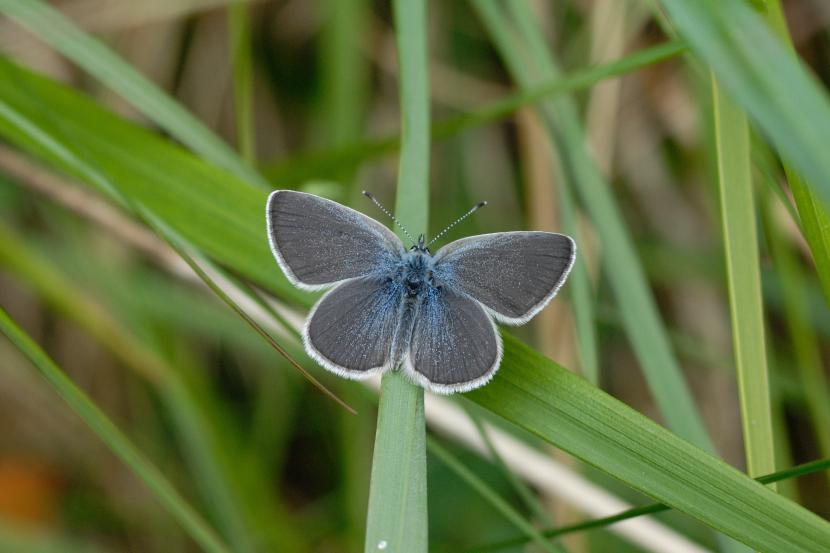
With June consisting mostly of surveying, we managed to find and record the bordered brown lacewing, the northern brown argus butterfly, and the small blue butterfly. This year there were three records of the incredibly rare bordered brown lacewing at three locations on the Aberdeenshire coast. We hope to locate new sites for the lacewing and increase survey efforts next year in the hopes of a higher number of records and to learn more about this elusive species.
We also managed to locate at least one northern brown argus colony, also on the Aberdeenshire coast, and we located a number of potential sites for investigation next year. Over the next few years, we are hoping to improve the habitat at the known sites and create more suitable habitat by sowing seeds and planting the caterpillar food plant (common rock-rose). On the Angus coast, dedicated volunteers walked the transect in Carnoustie throughout the summer looking for and recording the small blue, with plenty of confirmed sightings.
Woodlands Primary School is the first Ambassador school in the area, advocating for the small blue. East Coast Project Officer Caitlin has been visiting the school to teach the P5-7 classes about the species and the importance of conservation work. P7 joined her on a visit to Carnoustie Golf Course to help the club’s sustainability team sow some wildflower and kidney vetch seeds on the southern boundary of the golf course. The children also helped volunteer Glyn Edwards plant some of the kidney vetch plug plants that he had grown. Despite a brief shower of rain, everyone got their hands dirty and took part in weeding, sowing, planting, and some species observation, all in an effort to expand and improve habitat for the local small blue population.
North Coast
Sarah Bird (Plantlife), Senior Project Officer, and Louise Senior (Plantlife), People Engagement Officer
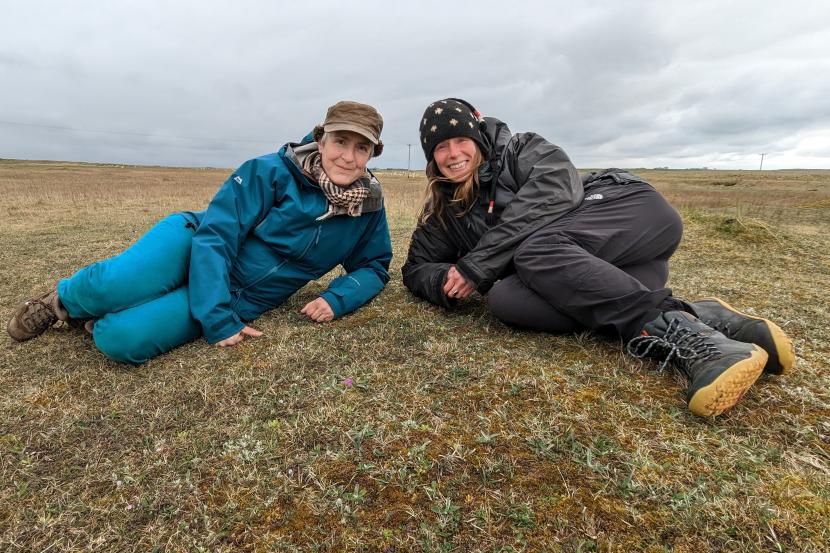
It has been a fabulous year for our plants – with many thousands of purple oxytropis and Scottish primroses seen on the cliffs and cliff-top meadows. Shoreline surveys by staff and volunteers found oysterplants growing on several beaches in Caithness. Small blue butterflies have been spotted at all the known sites, and great yellow bumblebees were still being found even in September. The only one of our target species here in the North Coast that we’ve not seen this year is the leaf beetle, which hasn’t yet been recorded in the region, but we have set up a ‘Rare Beetle Hunt’ and people are looking for it.
We have made super links with communities and connected with many existing community groups, establishing exciting partnerships and seeking to ensure significant and sustainable outcomes for the project. The North Coast project now has a growing team of enthusiastic volunteers helping with habitat management for small blue butterflies and great yellow bumblebees, and growing our special plants. Plantlife Artist in Residence Iris Hill spent a fantastic week with us in June. Her watercolour workshops focused lots of creative energy inspired by our priority species – the results are truly stunning!
This summer, we organised a Conservation Summer School in partnership with Dunnet Community Forest. Young people attending gained a John Muir Award, and credits for Saltire and Leadership awards. Participants learned essential outdoor and fieldcraft skills, assisted with practical habitat management and surveys for our priority species; they had great fun too!
We also flew the Species on the Edge flag at events across our region, from our launch at Dunnet Forest in May to Caithness Show, Durness Highland Gathering and many others. We spread the word about the project, getting our faces and the project known and recognised.
Orkney
Helen Cromarty (RSPB Scotland), Project Officer, and Sam Stringer (RSPB Scotland), People Engagement Officer
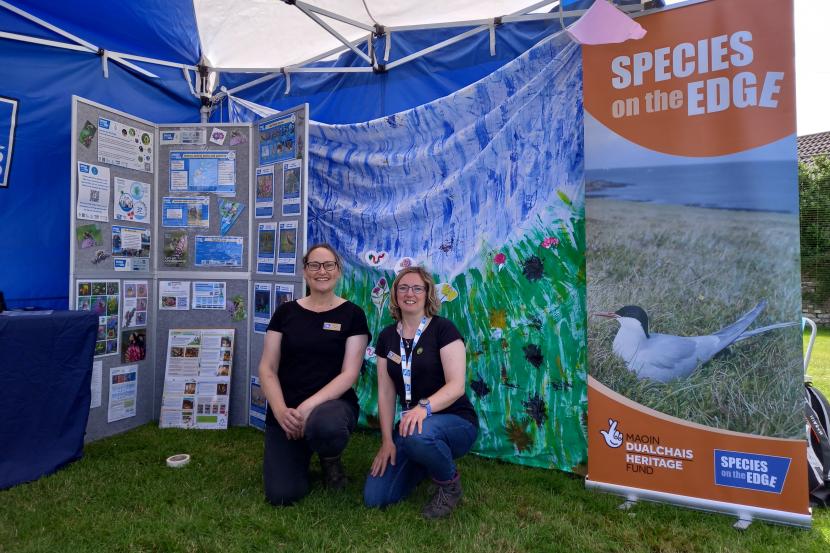
So far in Orkney we have engaged with over 1000 local people at events, talks, and in schools across the area. We attended the Orkney Agricultural Show, Orkney Science Festival, and were part of the exhibition ‘Nature in a Changing World’ at Stromness Museum from April to October. We have undertaken over 40 species surveys for waders, terns, bumblebees, and bats, and have worked with 15 volunteers so far this year.
We are currently discovering more about bats in Orkney with the local bat group and have a family bat walk planned with Scottish Wildlife Trust at the end of October. It is a surprise to some that bats can be found in Orkney, but last year in 2022 there were 81 sightings, mostly of the common pipistrelle – our target bat species here in Orkney.
We are excited to be planning our activities for 2024, including learning more about our plant species and the leaf beetle, making habitat enhancements, putting on new events, and welcoming more volunteers to join us! So do get in touch to find out how you can help nature in Orkney by emailing the team at [email protected]

Outer Hebrides
Emma Stobart (Bumblebee Conservation Trust), Project Officer, and Mairi Robertson Carrey (Bumblebee Conservation Trust), People Engagement Officer

In April we launched Species on the Edge programme activity in the Outer Hebrides with a talk and search for short-necked oil beetles in Uist. Since then, we’ve not stopped!
At the end of June and beginning of July we held the Outer Hebrides Wildlife Festival! We coordinated more than 40 community-led events over the eight days of the festival, across the length of the Outer Hebrides. Events ranged from talks-and-walks, to art exhibitions and workshops, to boat trips and opportunities to try new outdoor pursuits. One highlight was definitely the giant blow up whale!
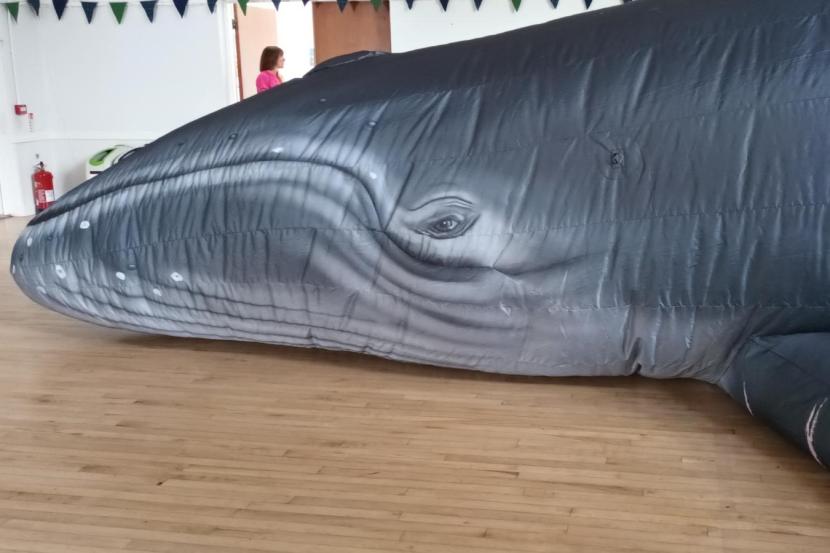
We have had a very busy survey season, starting with wader surveys in April, followed by bumblebee, short-necked oil beetle, and northern colletes surveys throughout the summer. Car trouble meant that there were some issues with northern colletes surveys, but local recorders and volunteers helped us immensely. We had some glorious sunny days, which made getting out to do surveys extremely enjoyable, but it also meant that our species reacted differently to how we would normally expect and the habitat in certain areas was pretty dry, even at the beginning of the season. Our bees started off slowly, but by July we were getting decent numbers of great yellow and moss carder bumblebees.
We were less successful with our bat surveys, and our Irish Lady’s tresses were very early in coming out this year in Barra and Uist, so much so that we almost missed them! We worked closely with our RSPB Outer Hebrides partners to put up signs at little tern and arctic tern colonies, making people aware of ground nesting birds and ensuring disturbance to these sensitive birds was kept to a minimum. We’ll be planning to do more engagement work next year to encourage locals and tourists alike to look out for these precious colonies.
We have also started working with crofters and will be holding events with SAC over the winter months to get more people engaged with the work we are doing. Currently, we have topping underway on crofts in parts of Lewis and Uist to help control rush and improve habitat for breeding waders. We’re also looking forward to running more events on bee ID and will be teaming up with the Outer Hebrides Recording group to run ID training with the help of experts. Dates for these are yet to be confirmed but keep an eye on our social media and sign up to our mailing list for updates.

Shetland
Molly Harvey (RSPB Scotland), People Engagement Officer, and Tom Allen (RSPB), Project Officer
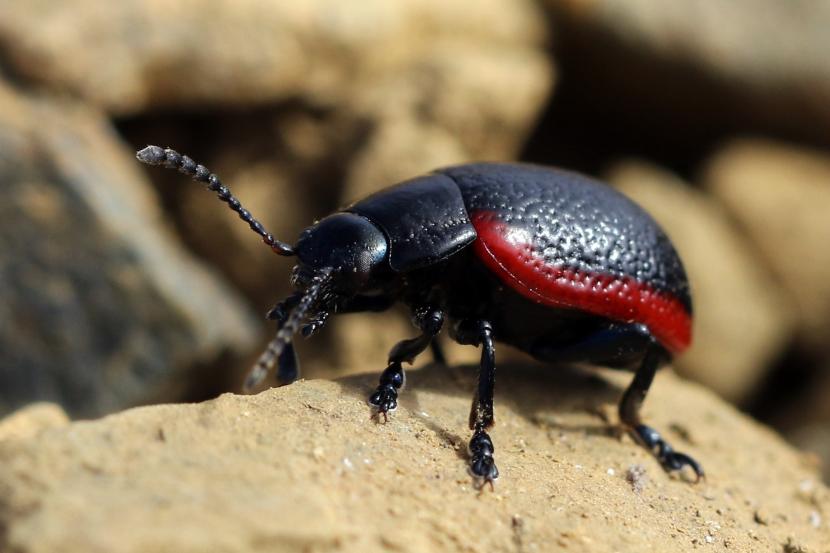
So far in Shetland this year we have monitored five oysterplant sites, created a citizen science survey for members of the public to survey road verges, coordinated with the local RSPB team to survey both the plantain leaf beetle and the red-necked phalarope, and conducted wader surveys on nine crofts and farms.
We have been connecting with and exploring possibilities for collaboration with a range of organisations, individuals, and communities. It has been a privilege to hear about some of the incredible things that are already happening here, such as the OPEN Project’s peer education and peer mentoring programme and the range of engagement and citizen science activities spearheaded by the Shetland Community Wildlife Group, to give just a flavour!
At our Species on the Edge Shetland launch event, we collaborated with other Shetland-based conservation organisations to showcase, celebrate, and recruit volunteers. The volunteering community on Shetland is vibrant and active and we hope to continue to work closely with other conservation organisations on Shetland to provide a joined-up and holistic volunteering experience.
We have also enjoyed working closely with our Shetland-based partner organisation, the Shetland Amenity Trust (SAT). Rory from SAT has been sharing some of his treasure-trove of natural history knowledge with us at our training events for bumblebee identification. Our first bumblebee identification event was on Bressay, an island reached by a short ferry ride from Lerwick. The day was a bit drab and the verges that in the sunshine teem with bumblebees lay quiet. However, we were invited by one of the attendees into their incredible garden which they had curated for pollinators. Here, we found five of the six species of bumblebee known in Shetland including the Shetland bumblebee, one of our priority species here in Shetland. At a recent catch-up event with volunteers, people were still talking about this garden and sharing the tips that had been passed on by its curator! A wonderful example of the ripple effect positive action for people and pollinators alike can have.
We also joined in with the busy programme of summer events across Shetland, attending agricultural shows, the Shetland Climate Festival, and hosting activities for UnstFest – the most northerly festival in the UK. All of these experiences have been remarkable: the people we have met and the ideas, interest, and enthusiasm they have shared; the stories we have been told of what makes Shetland special to them; and what people are already doing to support and sustain the special nature of Shetland. We use the word nature here to capture the special character of Shetland; its geology, habitats, culture, traditions, and crofting heritage. All of this together is the nature of Shetland and it is clear that it is very special to the people who live here.

Solway
Jack Barton (RSPB Scotland) and Liam Templeton (Amphibian and Reptile Conservation), Project Officers

Here on the Solway Coast, from Powfoot to Stranraer, we have kicked off our programme of species survey and monitoring. This has included searching for the tiny eggs of the northern brown argus butterfly - a painstaking but rewarding task! With the help of volunteers, we were pleased to discover eggs in new locations which we will monitor over the course of the project.
With assistance from the local Dumfries & Galloway Bat Group, we hosted two Bat Walks in the coastal communities of Kippford and Kirkcudbright. These events proved extremely popular and we were treated to spectacular views of pipistrelle and noctule bats as they performed stunning aerial acrobatics in pursuit of their insect prey.
Although summer is now long gone, that doesn't mean fieldwork has come to an end. Greenland white-fronted geese return to Scotland in October, so we will begin winter monitoring of the population at West Freugh. We are also planning to coordinate volunteer work parties over the winter period to help improve habitat for species such as the northern brown argus and natterjack toad.
Following a recent unconfirmed record of medicinal leech from a pond in Dumfries and Galloway, surveys for leeches were undertaken at a number of ponds and medicinal leeches were confirmed from three new locations. This is great news and further surveys are planned for other ponds in the area.




